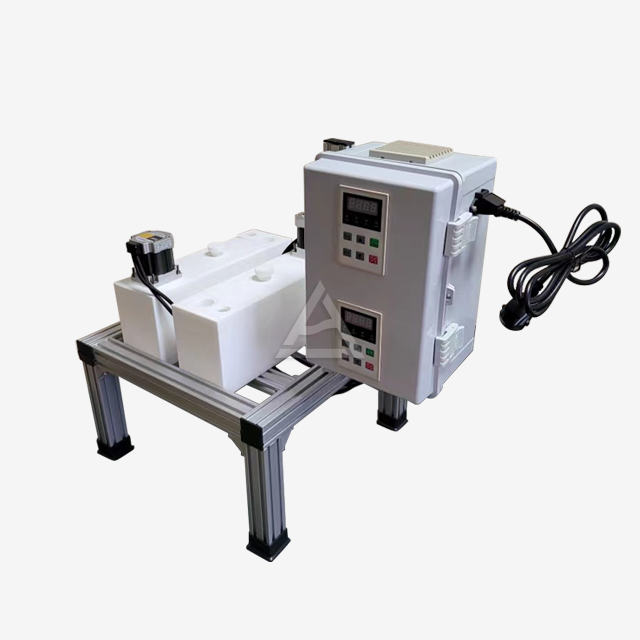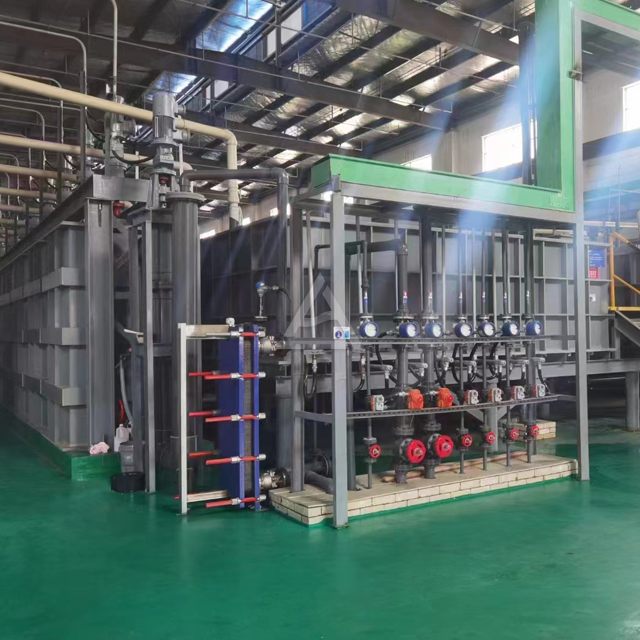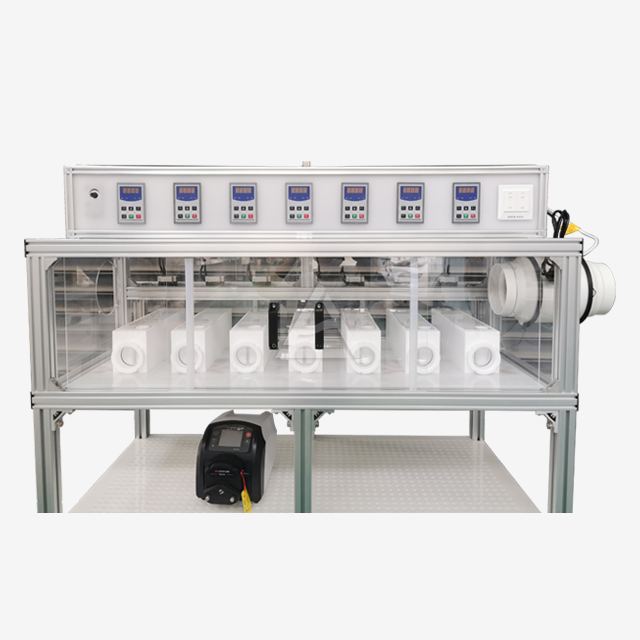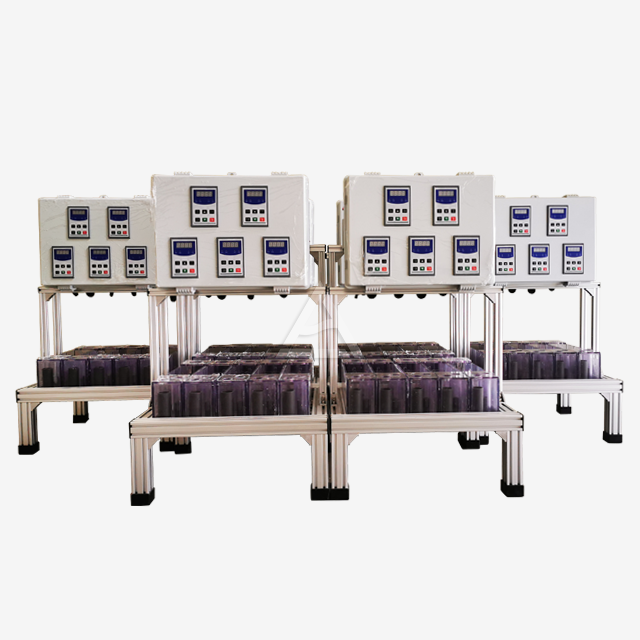Types of Liquid-Liquid Extraction Devices for Laboratory Use
Box-Type Extraction Tanks: Versatility Meets Efficiency
Box-type extraction tanks are a staple in many laboratories due to their versatility and ease of use. These devices feature a rectangular design that allows for efficient mixing and separation of immiscible liquids. The box shape provides ample surface area for phase interaction, promoting thorough extraction. Modern box-type tanks often incorporate advanced materials like corrosion-resistant alloys, ensuring longevity even when working with aggressive solvents. Some models feature transparent panels, allowing researchers to visually monitor the extraction process in real-time. The modular nature of these tanks also enables easy scaling, making them suitable for both small-scale experiments and larger batch processes.
Tubular Extraction Tanks: Maximizing Contact Time
Tubular extraction tanks leverage gravity and fluid dynamics to enhance extraction efficiency. These vertical columns are designed to maximize the contact time between the two liquid phases. As droplets of one phase travel through the continuous phase, mass transfer occurs along the length of the tube. This design is particularly effective for systems with slow kinetics or those requiring multiple theoretical stages. Advanced tubular extractors may incorporate internal baffles or structured packing to further increase interfacial area and promote droplet coalescence. The ability to operate these devices in countercurrent mode makes them ideal for achieving high separation factors with minimal solvent consumption.
Micro-Extraction Tanks: Precision at the Microscale
The trend towards miniaturization in laboratory processes has led to the development of micro-extraction tanks. These devices are designed to handle extremely small sample volumes, often in the microliter range. Micro-extraction tanks utilize principles of microfluidics to achieve rapid and precise separations. The reduced scale offers several advantages, including minimal sample and solvent consumption, faster equilibration times, and the ability to perform parallel extractions. Some advanced micro-extraction systems integrate with automated sample handling and analysis equipment, enabling high-throughput screening applications. The precision and reproducibility of these devices make them invaluable in fields such as pharmaceutical development and environmental trace analysis.

Advanced Features in Modern Extraction Equipment
Automated Process Control and Monitoring
Modern extraction equipment is increasingly incorporating sophisticated automation features. These systems allow for precise control over critical parameters such as temperature, flow rates, and mixing intensity. Advanced sensors continuously monitor pH, conductivity, and phase interfaces, providing real-time data on the extraction process. This level of control not only enhances reproducibility but also enables the optimization of extraction conditions on the fly. Some systems even integrate machine learning algorithms to predict optimal extraction parameters based on historical data, further streamlining the research process.
Enhanced Safety Mechanisms
Safety is paramount in laboratory operations, and contemporary extraction devices reflect this priority. Many units now feature integrated fume hoods or enclosed designs to minimize exposure to volatile solvents. Pressure relief valves and emergency shutdown systems are standard in high-pressure extractors. For operations involving flammable solvents, explosion-proof motors and intrinsically safe electrical components are employed. Some manufacturers have developed "smart" safety systems that can detect abnormal conditions, such as phase inversion or excessive pressure build-up, and automatically initiate corrective actions.
Modular and Scalable Designs
Flexibility is a key consideration in modern laboratory equipment. Many extraction devices now feature modular designs that allow for easy reconfiguration or scaling. This adaptability enables researchers to quickly adjust their setup for different experimental requirements without investing in entirely new equipment. Some systems offer interchangeable components, such as mixing elements or separation chambers, to accommodate a wide range of liquid-liquid systems. The ability to easily scale up from bench-top to pilot-plant size is particularly valuable for researchers in fields like process development and chemical engineering.

Optimizing Extraction Processes with Specialized Equipment
Centrifugal Extractors: Harnessing Centrifugal Force
Centrifugal extractors represent a significant leap forward in liquid-liquid separation technology. These devices utilize centrifugal force to rapidly separate immiscible phases, dramatically reducing processing times compared to conventional gravity-based methods. The high-speed rotation creates an intense mixing zone followed by a quiescent separation zone, all within a compact footprint. This design is particularly effective for systems with small density differences or those prone to emulsion formation. Advanced centrifugal extractors may incorporate features like variable rotor speeds, allowing for fine-tuning of the extraction process. The ability to handle high throughputs while maintaining a small holdup volume makes these devices ideal for continuous processing applications.
Extraction Towers: Maximizing Efficiency in Continuous Operations
Extraction towers are designed as extraction equipment for high-efficiency, continuous liquid-liquid extraction processes. These tall, vertical columns provide multiple theoretical stages of separation within a single unit. The design typically incorporates a series of perforated plates or structured packing to enhance phase contact and promote mass transfer. Some advanced extraction towers feature rotating disc contactors or pulsed columns to further intensify the extraction process. The ability to operate in true countercurrent mode allows for excellent separation efficiency with minimal solvent consumption. These towers are particularly well-suited for applications requiring high purity or dealing with systems with unfavorable distribution coefficients.
Hybrid and Multi-Functional Extraction Systems
The boundaries between different types of extraction equipment are becoming increasingly blurred as manufacturers develop hybrid systems that combine multiple functionalities. For instance, some devices integrate liquid-liquid extraction with subsequent purification steps like distillation or crystallization. Others combine extraction with in-line analysis, allowing for real-time monitoring of extract composition. These multi-functional systems can significantly streamline laboratory workflows by reducing the need for separate processing steps. Some cutting-edge designs even incorporate microwave-assisted extraction or ultrasonic enhancement, pushing the boundaries of what's possible in liquid-liquid separation.

Conclusion
The field of liquid-liquid extraction equipment for laboratories is rapidly evolving, offering researchers an unprecedented array of tools to optimize their separation processes. From versatile box-type tanks to advanced centrifugal extractors, each device brings unique advantages to the table. The integration of automation, enhanced safety features, and modular designs is making these devices more user-friendly and adaptable than ever before. As we look to the future, the continued development of specialized and hybrid extraction systems promises to further revolutionize chemical separations in laboratory settings.
Contact Us
Ready to elevate your laboratory's extraction capabilities? Cuiyan Technology offers a comprehensive range of cutting-edge extraction equipment tailored to your specific needs. From micro-extraction tanks to industrial-scale extraction towers, our solutions combine innovation with reliability. Experience the benefits of enhanced efficiency, precision, and safety in your liquid-liquid extraction processes. Contact us today at wangzhijun@cuiyan-tec.com to discover how our expertise can transform your research and development efforts.
References
1. Johnson, A. K., & Smith, B. L. (2022). Advances in Liquid-Liquid Extraction Technologies for Laboratory Applications. Journal of Separation Science, 45(3), 321-335.
2. Zhang, Y., & Chen, X. (2021). Micro-Extraction Devices: Miniaturizing Separation Processes in Modern Laboratories. Analytical Chemistry, 93(8), 4112-4128.
3. Rodriguez, M., & Patel, R. (2023). Centrifugal Extractors: Revolutionizing Liquid-Liquid Separation in Research Settings. Chemical Engineering Science, 228, 116985.
4. Liu, H., & Wang, J. (2022). Automated Process Control in Laboratory-Scale Extraction Equipment: A Review. Lab on a Chip, 22(15), 2789-2805.
5. Thompson, E. L., & Garcia, C. (2021). Safety Considerations in Modern Liquid-Liquid Extraction Devices. Journal of Chemical Health and Safety, 28(6), 367-379.
6. Yamamoto, K., & Brown, D. (2023). Hybrid Extraction Systems: Integrating Multiple Unit Operations for Efficient Chemical Separations. Separation and Purification Technology, 303, 122541.












